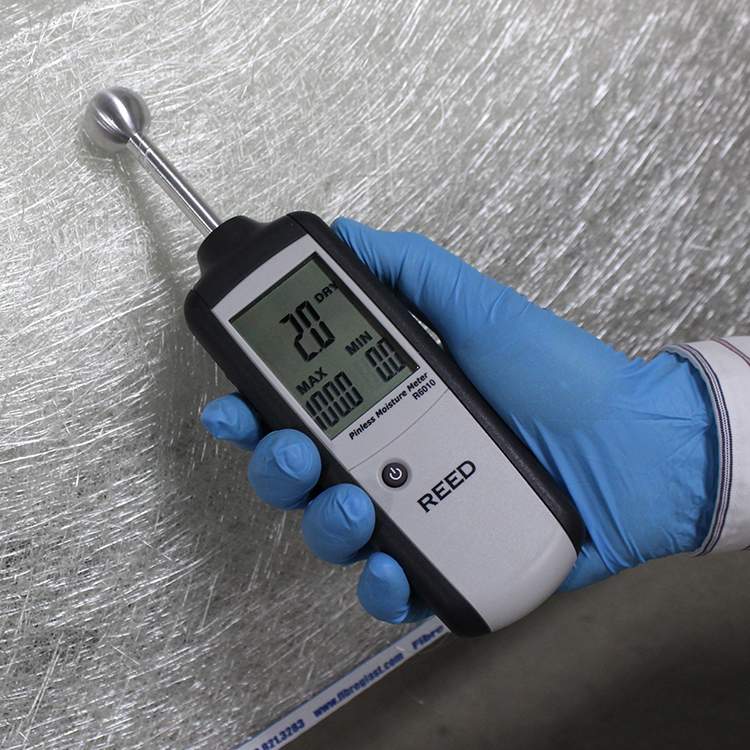Just How a Moisture Meter Can Improve Your Construction Jobs and Stop Damages
Just How a Moisture Meter Can Improve Your Construction Jobs and Stop Damages
Blog Article
The Ultimate Guide to Moisture Meters: A Comprehensive Overview and Exactly How They Can Conserve You Cash
Wetness meters offer as crucial tools in detecting and checking moisture web content in products, aiding in avoiding expensive damages and guaranteeing the high quality of items. Comprehending the subtleties of various types of wetness meters, their applications, and the possible cost-saving advantages they use can be a game-changer for companies and specialists alike.
Kinds of Wetness Meters
One common type is the pin-type wetness meter, which measures the electric resistance in between 2 pins put into a product. Pinless moisture meters, on the other hand, use electro-magnetic sensor plates to scan a larger location without causing damages to the product's surface.

Infrared dampness meters gauge the thermal properties of a product to establish its wetness material non-invasively, making them helpful for applications where pin or pinless meters may not be appropriate. Understanding the various types of dampness meters offered can aid sectors select the most proper tool for their specific moisture dimension demands.

Advantages of Making Use Of Dampness Meters
Dampness meters use vital advantages in precisely evaluating and checking wetness levels in diverse products and settings (Moisture Meter). One of the key advantages of making use of moisture meters is the avoidance of prospective damages brought on by excess moisture. By spotting and attending to high moisture degrees beforehand, moisture meters aid to avoid mold and mildew growth, rot, and structural damage in structures, saving both money and time on repair services. Furthermore, wetness meters help in making sure the quality of materials throughout building or production processes. By properly determining moisture material, these tools help preserve the integrity of timber, drywall, concrete, and various other materials, lowering the risk of problems or failings.
Furthermore, using moisture meters can lead to boosted energy efficiency. In farming settings, moisture meters play an important role in optimizing crop yields by enabling farmers to check soil dampness levels and make educated irrigation decisions.
Just How to Pick the Right Moisture Meter
Picking the appropriate wetness meter entails considering essential factors such as material compatibility, measurement array, and calibration accuracy. When choosing a wetness meter, it's necessary to make sure that the meter appropriates for the certain product you will certainly be testing. Various materials have differing electrical properties that can impact wetness analyses, so choosing a meter made for your product is critical for accurate outcomes. Additionally, consider the measurement array of the moisture meter. Make sure that the meter can detect dampness degrees within the variety needed for your applications. Calibration accuracy is one more essential factor to keep in mind. Go with a wetness meter with reputable calibration to guarantee regular and specific readings. Some meters might call for periodic calibration modifications, so recognizing the calibration process is essential. By thoroughly examining these factors, you can pick a dampness meter that satisfies your demands and provides precise moisture measurements for your projects.
Appropriate Strategies for Dampness Meter Usage

Cost Cost Savings With Moisture Meter Applications
Just how can the strategic use of dampness meters lead to significant cost savings across numerous industries? Wetness meters play a critical role in expense savings by stopping prospective damages and guaranteeing Get the facts quality assurance in different industries. In the farming market, moisture meters aid in identifying the ideal time for harvesting crops, avoiding over-drying or excess wetness that can impact the last product's top have a peek at these guys quality. This precise tracking aids farmers stay clear of unneeded losses and optimize their return.
Similarly, in building, wetness meters assist avoid expensive damages by finding moisture degrees in structure materials, such as timber or concrete, which can lead to architectural concerns otherwise attended to quickly. By identifying problem locations early, specialists can take restorative procedures to stay clear of extensive repair work or replacements, eventually saving money and time.
Additionally, in the food handling industry, wetness meters are crucial for keeping track of product high quality and making certain conformity with safety laws. By precisely measuring wetness web content in foodstuff, producers can prevent perishing, preserve freshness, and lower waste, resulting in significant price savings. Overall, the strategic application of wetness meters is a valuable investment that can cause substantial expense reductions and enhanced effectiveness across numerous markets.
Conclusion
In verdict, moisture meters are useful tools for finding and determining moisture degrees in numerous materials. By utilizing the appropriate dampness meter and adhering to appropriate strategies, users can properly stop pricey damages triggered by excess dampness.
Wetness meters serve as vital tools in identifying and checking moisture content in materials, aiding in preventing costly damages and guaranteeing the top quality of products. Infrared wetness meters determine the thermal residential properties visit of a material to establish its moisture content non-invasively, making them valuable for applications where pin or pinless meters might not be ideal.Wetness meters offer indispensable benefits in properly analyzing and checking dampness levels in varied products and environments. In farming setups, wetness meters play an essential function in maximizing plant returns by allowing farmers to keep track of dirt wetness degrees and make notified watering choices.In verdict, wetness meters are beneficial devices for determining and detecting dampness degrees in various materials.
Report this page